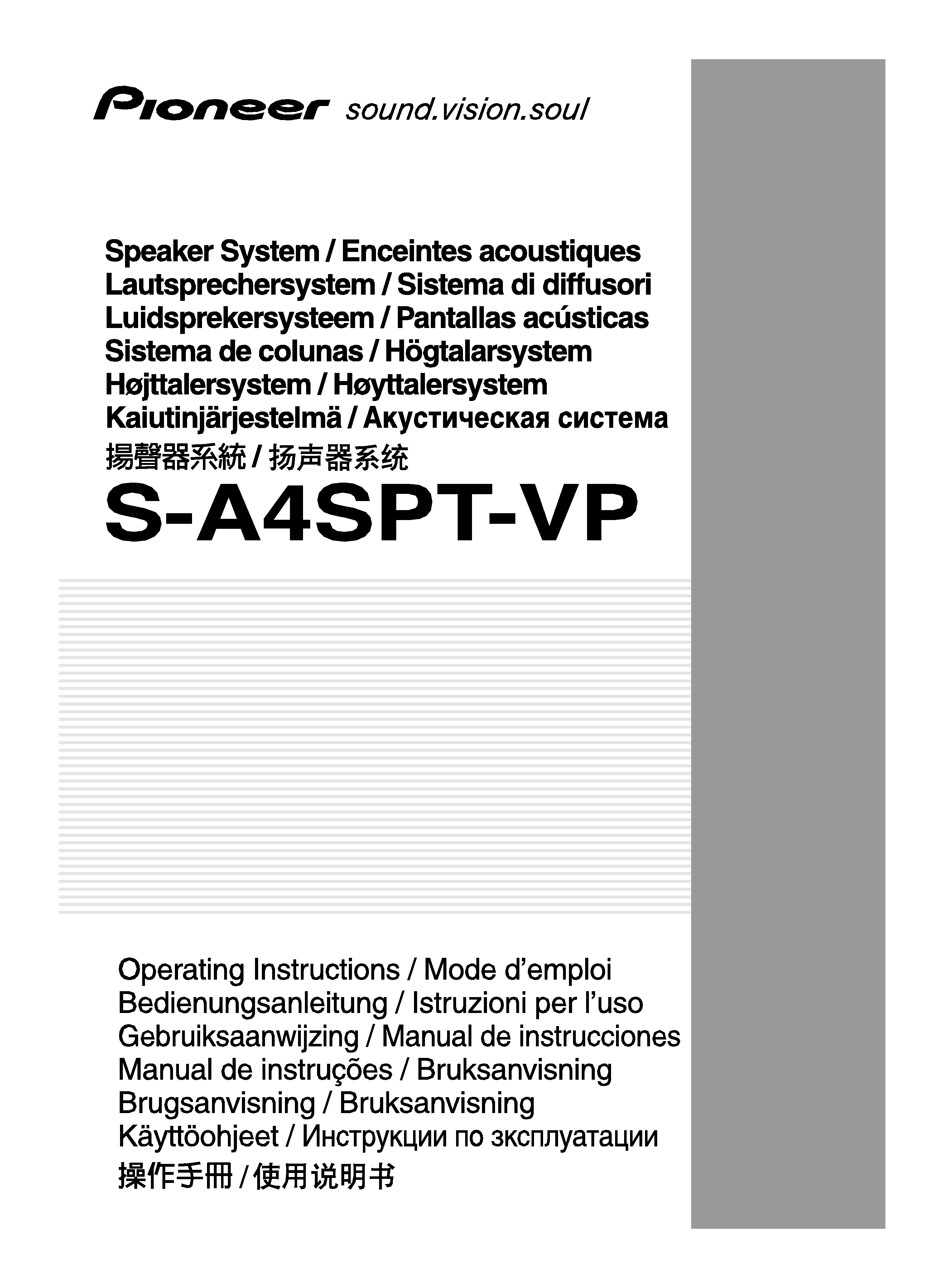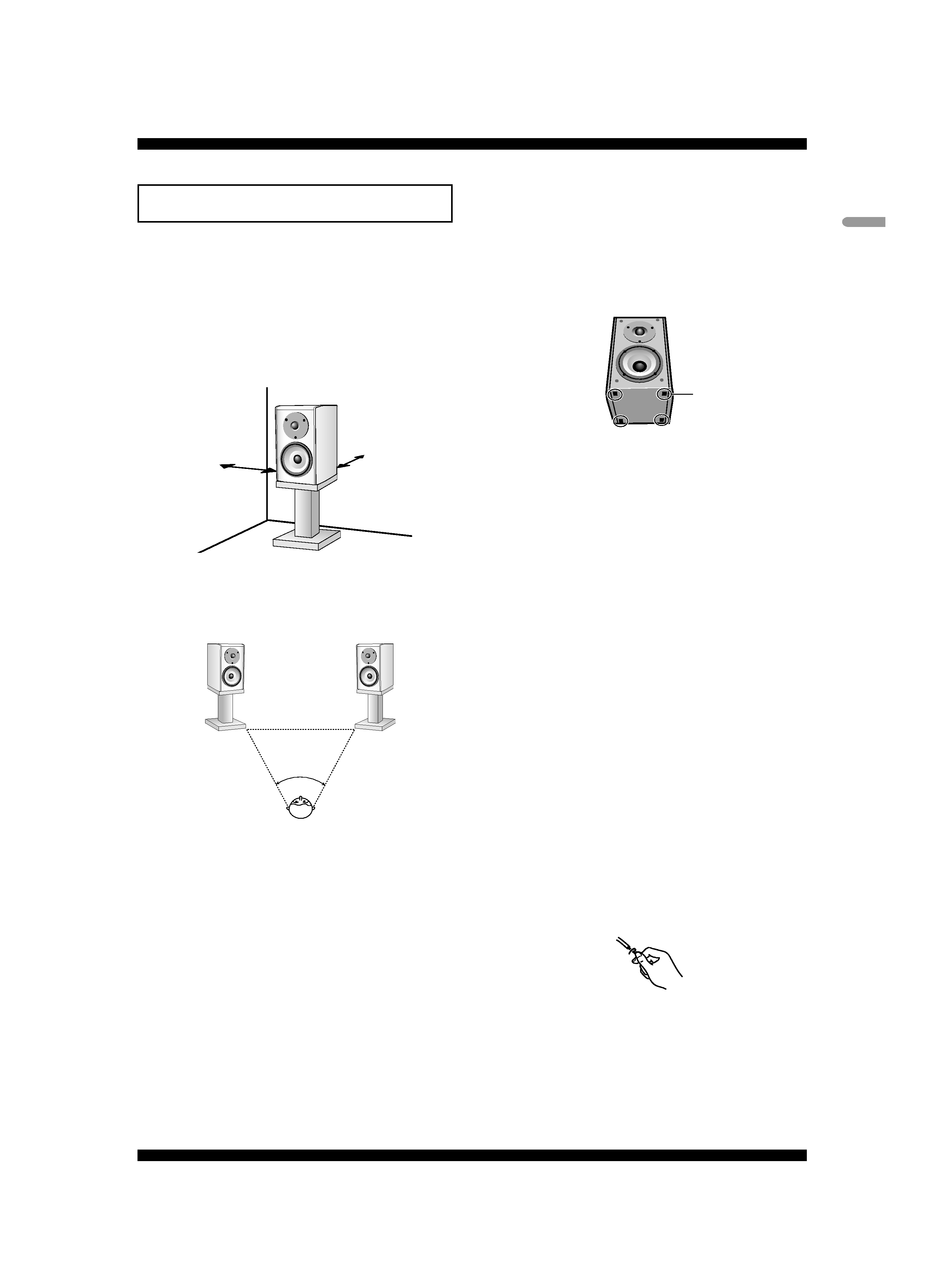
2
En
Thank you for buying this Pioneer product. Please read
through these operating instructions so you will know how to
operate your model properly. After you have finished reading
the instructions, put them away in a safe place for future
reference.
Before you start
· The nominal impedance of this speaker system is 6 .
Connect the speaker system to an amplifier with a load
impedance ranging from 4 to 16 (a model with "4
16 " displayed on the speaker output terminals).
· Do not touch the speaker cones as they are easily
damaged.
In order to prevent damage to the speaker system resulting
from input overload, please observe the following
precautions:
· Do not supply power to the speaker system in excess of
the maximum permissible input.
· When connecting or disconnecting anything in your AV
system, make sure the amplifier is switched off.
· When using a graphic equalizer to emphasize loud
sounds in the high-frequency range, do not use
excessive amplifier volume.
· Do not try to force a low-powered amplifier to produce
loud volumes of sound (the amplifier's harmonic
distortion will be increased, and you may damage the
speaker).
Caution: installation
· Do not place the speaker on an unstable surface. It
could present a hazard if it falls, as well as damaging the
equipment.
· Switch off and unplug your AV equipment and consult
the instructions when connecting up components. Make
sure you use the correct connecting cables.
· Do not put a TV or other AV equipment on top of this
speaker. It could present a hazard if it falls, as well as
damaging the equipment.
Caution: in use
· Do not use the speaker to output distorted sound for
long periods of times. This can result in a fire hazard.
· Do not sit or stand on the speaker, or let children play on
the speaker.
· Do not put large or heavy objects on top of the speaker.
· Do not install your speakers overhead on the ceiling or
wall. If improperly attached, the speaker grille can fall
and cause damage or personal injury.
· Do not attach these speakers to the wall or ceiling. They
may fall off and cause injury.
WARNING: Handling the cord on this product or
cords associated with accessories sold with the
product will expose you to chemicals listed on
proposition 65 known to the State of California and
other governmental entities to cause cancer and
birth defect or other reproductive harm.
D36-P4_A_En
Wash hands after handling
Features of the "Pure Malt" speaker
cabinet
The cabinet for this speaker system is white oak recycled
from barrels used for aging malt whiskey. These whiskey
barrels were made from oak trees over one-hundred years old
and have been used for over fifty years for aging whiskey. By
adopting this dense, hard wood for our speaker cabinets,
unwanted reverberations are suppressed, and the barrel
material's natural musical characteristics allow the wood to
display its richly expressive sound.
Unique characteristics of this barrel material may include
nail marks and whiskey stains in the wood, with the result
that each product possesses unique individuality. We hope
you enjoy the pleasure of owning these speakers with their
singular appearance.
Since the oak material used in these speakers is a natural
material, they respond sensitively to temperature and
humidity changes in the environments where they are used.
Using them in conditions of excessive or insufficient
humidity may not only cause adverse influence on sound, but
also cause deformation or discoloration of the cabinet due to
shrinkage. For optimum results and a lifetime of usage,
please following the precautions noted below.
Usage precautions
· Conditions considered unpleasant by humans are
detrimental to speakers as well. Providing a comfortable
environment for the speakers will assist them in
demonstrating their best performance. Please maintain
the usage environment as follows:
Temperature: 15 °C to 25 °C
Relative Humidity: 35 % to 65 % (winter)
40 % to 70 % (summer)
· In areas of high humidity, use a dehumidifier, and in
areas of excessive dryness, use a humidifier to adjust
the room's humidity level.
· Avoid exposure to direct sunlight, and do not install in
areas nearby heating appliances.
· When using room air-conditioners or stoves to rapidly
cool or heat room spaces, take precautions to avoid
excessive dehumidification.
· Avoid locations near windows or in other locations
where speakers may be exposed to the influence of
outdoor air, since condensation may result.
Installation
Speaker systems are delicately influenced by the conditions
of the listening room where they are used. As a result, you
should take care to provid optimum conditions for your
listening environment.
This speaker system is a so-called "bookshelf" type. This
means that, for example, if the speaker system is placed
directly on the floor, bass sounds will be reverberated from
the floor surface, overemphasizing the low-range sounds and
impairing the overall sound quality. To prevent this, the use of
speaker stands is recommended to separate the speakers
from the floor. In general, good results will be produced if you
install the speakers so that the high-range speakers
(tweeters) are at about the same level as the listener's ears.












